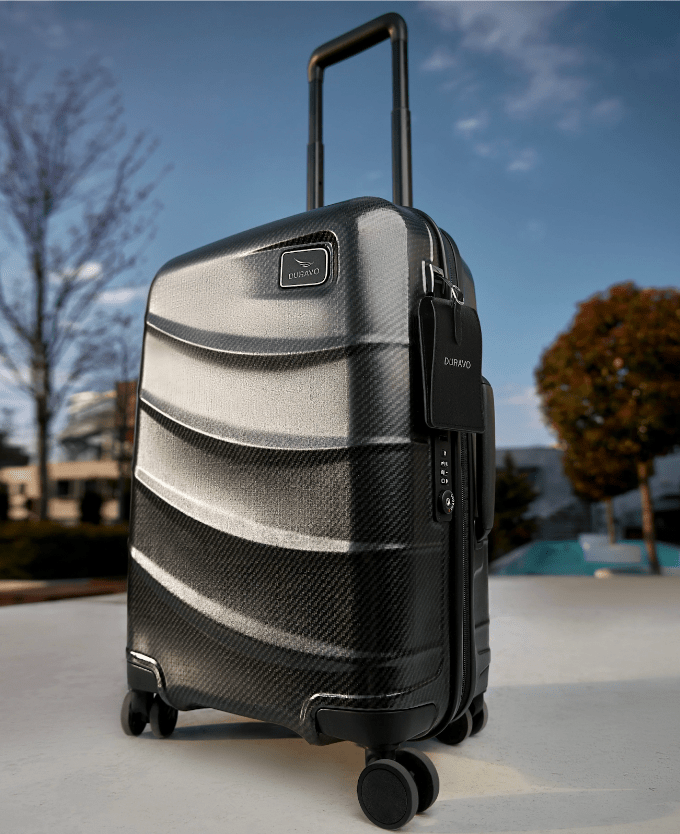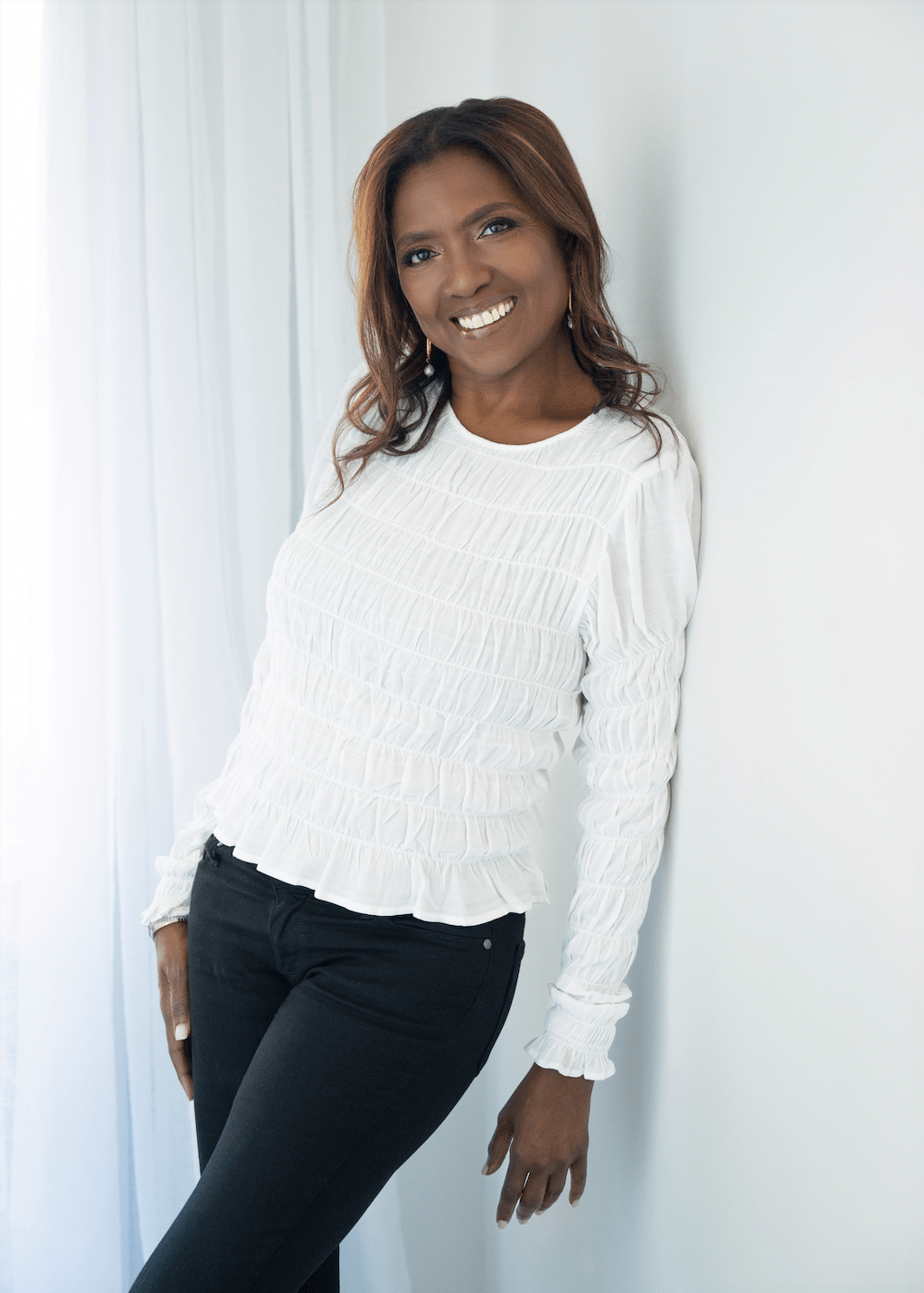Lifestyle
Duravo’s Success Story: Engineering the Perfect Suitcase

By: Mae Cornes
When Matt Muhr and Dan Cooper founded Duravo, they started with something other than luggage design. Instead, their journey began unexpectedly: the world of tactical and anti-ballistic gear. This unconventional background led them to discover a self-reinforced composite material used in professional sports equipment, military gear, and automotive components.
Working closely with a German engineering team, Muhr and Cooper developed Flexshell™, a material that combines strength and lightness. “We saw an opportunity to bring advanced materials science to an industry that hadn’t seen significant innovation in decades,” Muhr explained.
A Lightweight Contender in a Heavy-Duty Market
Duravo’s entry into the luggage market came at a time when established brands dominated the landscape. However, the company’s focus on material innovation sets it apart from competitors.
The Duravo International, an expandable carry-on, weighs just 5 pounds, making it significantly lighter than many competitors’ offerings. This weight reduction doesn’t come at the cost of durability or capacity. The suitcase expands from 37 liters to 46 liters, providing travelers with flexibility without exceeding airline size restrictions.
Cooper noted, “Our goal wasn’t just to make another suitcase. We wanted to change how people think about luggage durability and weight fundamentally.”
Rigorous Testing: Proving Durability in the Lab and on the Road
To validate its claims about Flexshell’s durability, Duravo invested heavily in product testing. The company reports subjecting its luggage to weighted tumble tests, extreme drop tests, and thousands of handle yanks.
The company does not publicly share specific test results, but it states that Flexshell provides five times the strength of traditional plastics used in luggage. This claim would represent a significant advancement in luggage materials if independently verified.
Technology Integration: Beyond Basic Storage
Duravo’s products incorporate several tech-friendly features, reflecting the changing needs of modern travelers. The luggage includes built-in USB access for charging devices, a hidden sleeve for tracking devices like AirTags, and compartments designed to protect electronics during travel.
These additions address common pain points for travelers, such as keeping devices charged and preventing lost luggage. However, it’s worth noting that some of these features, such as USB charging ports, are becoming increasingly common in premium luggage offerings.
Market Performance and Customer Reception
Since its launch a year ago, Duravo reports generating over 1,500 customers. While this number suggests steady growth, it’s modest compared to established brands in the luggage industry. The company currently limits its market to the U.S. and Canada, indicating potential for expansion.
The company reports positive customer reviews, a critical factor in the luggage industry, with an online star rating of 5 out of 5. However, independent verification of these ratings and a larger sample size would provide a more comprehensive picture of customer satisfaction.
Challenges and Competition in a Crowded Market
Despite its inventive method, Duravo faces significant challenges. Established brands like Away, Monos, and Tumi command substantial market share and brand recognition in a highly competitive luggage market.
Duravo’s focus on high-end materials and manufacturing in Germany will likely result in higher production costs. This could make it difficult for the company to compete on price with brands that manufacture in regions with lower production costs.
Environmental Considerations and Future Directions
Duravo emphasizes the eco-friendly nature of its products, stating that Flexshell is recyclable. However, specific data on the material’s environmental impact throughout its lifecycle is not readily available. As sustainability becomes increasingly important for consumers, more transparent and detailed environmental information could benefit the company’s market position.
Duravo’s success may hinge on its ability to scale production while maintaining quality, expand its product line, and effectively communicate its value proposition to a broader audience. The luggage industry’s recovery and growth following the COVID-19 pandemic will also play a crucial role in shaping the company’s trajectory.
As Duravo continues developing its brand and product line, its story is an interesting case study in bringing materials innovation to a well-established consumer goods category. The company’s future success will depend on its ability to balance innovation with market demands and effectively compete with more prominent, established brands.
Lifestyle
Wanda Knight on Blending Culture, Style, and Leadership Through Travel

The best lessons in leadership do not always come from a classroom or a boardroom. Sometimes they come from a crowded market in a foreign city, a train ride through unfamiliar landscapes, or a quiet conversation with someone whose life looks very different from your own.
Wanda Knight has built her career in enterprise sales and leadership for more than three decades, working with some of the world’s largest companies and guiding teams through constant change. But ask her what shaped her most, and she will point not just to her professional milestones but to the way travel has expanded her perspective. With 38 countries visited and more on the horizon, her worldview has been formed as much by her passport as by her resume.
Travel entered her life early. Her parents valued exploration, and before she began college, she had already lived in Italy. That experience, stepping into a different culture at such a young age, left a lasting impression. It showed her that the world was much bigger than the environment she grew up in and that adaptability was not just useful, it was necessary. Those early lessons of curiosity and openness would later shape the way she led in business.
Sales, at its core, is about connection. Numbers matter, but relationships determine long-term success. Wanda’s time abroad taught her how to connect across differences. Navigating unfamiliar places and adjusting to environments that operated on different expectations gave her the patience and awareness to understand people first, and business second. That approach carried over into leadership, where she built a reputation for giving her teams the space to take ownership while standing firmly behind them when it mattered most.
The link between travel and leadership becomes even clearer in moments of challenge. Unfamiliar settings require flexibility, quick decision-making, and the ability to stay calm under pressure. The same skills are critical in enterprise sales, where strategies shift quickly and no deal is ever guaranteed. Knight learned that success comes from being willing to step into the unknown, whether that means exploring a new country or taking on a leadership role she had not originally planned to pursue.
Her travels have also influenced her eye for style and her creative pursuits. Fashion, for Wanda, is more than clothing; it is a reflection of culture, history, and identity. Experiencing how different communities express themselves, from the craftsmanship of Italian textiles to the energy of street style in cities around the world, has deepened her appreciation for aesthetics as a form of storytelling. Rather than keeping her professional and personal worlds separate, she has learned to blend them, carrying the discipline and strategy of her sales career into her creative interests and vice versa.
None of this has been about starting over. It has been about adding layers, expanding her perspective without erasing the experiences that came before. Wanda’s story is not one of leaving a career behind but of integrating all the parts of who she is: a leader shaped by high-stakes business, a traveler shaped by global culture, and a creative voice learning to merge both worlds.
What stands out most is how she continues to approach both leadership and life with the same curiosity that first took her beyond her comfort zone. Each new country is an opportunity to learn, just as each new role has been a chance to grow. For those looking at her path, the lesson is clear: leadership is not about staying in one lane; it is about collecting experiences that teach you how to see, how to adapt, and how to connect.
As she looks to the future, Wanda Knight’s compass still points outward. She will keep adding stamps to her passport, finding inspiration in new cultures, and carrying those insights back into the rooms where strategy is shaped and decisions are made. Her legacy will not be measured only by deals closed or positions held but by the perspective she brought, and the way she showed that leading with a global view can change the story for everyone around you.
-

 Tech5 years ago
Tech5 years agoEffuel Reviews (2021) – Effuel ECO OBD2 Saves Fuel, and Reduce Gas Cost? Effuel Customer Reviews
-

 Tech6 years ago
Tech6 years agoBosch Power Tools India Launches ‘Cordless Matlab Bosch’ Campaign to Demonstrate the Power of Cordless
-

 Lifestyle6 years ago
Lifestyle6 years agoCatholic Cases App brings Church’s Moral Teachings to Androids and iPhones
-

 Lifestyle5 years ago
Lifestyle5 years agoEast Side Hype x Billionaire Boys Club. Hottest New Streetwear Releases in Utah.
-

 Tech7 years ago
Tech7 years agoCloud Buyers & Investors to Profit in the Future
-

 Lifestyle5 years ago
Lifestyle5 years agoThe Midas of Cosmetic Dermatology: Dr. Simon Ourian
-

 Health7 years ago
Health7 years agoCBDistillery Review: Is it a scam?
-

 Entertainment6 years ago
Entertainment6 years agoAvengers Endgame now Available on 123Movies for Download & Streaming for Free
